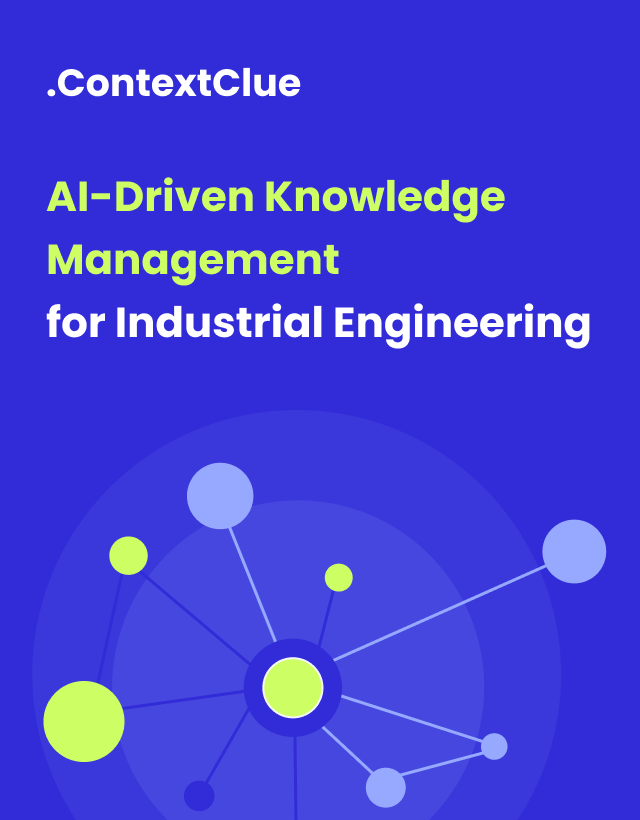
August 04, 2025
What is Algorithm Bias?
Author:

CSO & Co-Founder
Reading time:
7 minutes
Algorithm bias is systematic and repeatable errors in AI systems that create unfair outcomes, typically favoring one group of users over others.
This occurs when artificial intelligence algorithms produce results that are prejudiced due to flawed training data, biased design decisions, or erroneous assumptions embedded in the machine learning process.
Unlike human bias, algorithmic bias is often unintentional but can be far more pervasive due to the massive scale at which AI systems operate, potentially affecting millions of decisions across hiring, lending, criminal justice, and healthcare.
How Bias in an Algorithm Works
The core issue stems from machine learning’s fundamental principle: algorithms learn from data. If that data reflects historical inequities or societal biases, the resulting models will perpetuate and potentially amplify these inequities. This creates what experts describe as a “garbage in, garbage out” scenario, where biased inputs inevitably lead to biased outputs.
When AI algorithms detect patterns of historical biases or systemic disparities embedded within their training data, their conclusions reflect and amplify those biases.
Because machine learning tools process data on a massive scale, even small biases in the original training data can lead to widespread discriminatory outcomes.
Why AI Systems Become Biased
Algorithm bias doesn’t emerge from a single source but rather originates from multiple points throughout the AI development lifecycle, making it a complex problem requiring comprehensive solutions.
Historical and Pre-existing Bias
One of the most insidious sources of bias occurs when AI models are trained on historical data that reflects past prejudices and discriminatory practices.
For instance, if an AI system for hiring is trained on decades of employment data from when certain groups were systematically excluded from particular professions, the algorithm will learn to perpetuate these historical exclusions under the guise of objectivity.
Data-Related Problems
Selection bias emerges when training data is unrepresentative or selected without proper randomization.
A landmark study by Joy Buolamwini and Timnit Gebru demonstrated this clearly: commercial facial recognition systems showed error rates of up to 35% for darker-skinned women compared to less than 1% for lighter-skinned men, primarily due to the lack of diversity in training datasets.
Sample bias occurs when training data doesn’t represent the real-world population the AI system will encounter, while measurement bias can result from inconsistent data collection methods.
Representation bias emerges when certain groups are underrepresented in training datasets, leading to poor model performance for these groups.
Cognitive and Design Influences
Human cognitive biases can become embedded in algorithmic decision-making through the choices made by developers and data scientists.
Confirmation bias manifests when model builders unconsciously process data in ways that affirm pre-existing beliefs, while implicit bias occurs when AI assumptions are based on personal experiences that don’t necessarily apply more broadly.
Real-World Examples: When AI Bias Goes Wrong
The impact of algorithmic bias extends across numerous domains, with several high-profile cases illustrating both the prevalence and severity of the problem.
The COMPAS Criminal Justice Algorithm
The Correctional Offender Management Profiling for Alternative Sanctions (COMPAS) system, used by courts across the United States to assess defendant recidivism likelihood, came under scrutiny in 2016 when ProPublica’s investigation revealed significant racial disparities. Black defendants were incorrectly flagged as future criminals at nearly twice the rate of white defendants (45% vs. 23% false positive rate), while white defendants were more likely to be incorrectly labeled as low risk when they did reoffend.
This case highlighted a fundamental challenge in algorithmic fairness: different fairness metrics can be mutually exclusive. When base rates differ across groups, an algorithm cannot simultaneously satisfy multiple fairness criteria.
Amazon’s Biased Hiring Algorithm
Amazon’s experimental AI recruiting tool, developed between 2014 and 2017, provides another instructive example. The system was designed to automatically review resumes and rank candidates, but because it was trained on Amazon’s historical hiring data – reflecting the male-dominated tech industry – it systematically discriminated against female candidates.
The tool penalized resumes that included the word “women’s” and downgraded graduates from all-women colleges.
Despite engineers’ attempts to correct these biases, Amazon ultimately scrapped the project when it became clear that the fundamental issues could not be resolved.
Healthcare and Financial Services
In healthcare, algorithmic bias has manifested in diagnostic AI systems that perform poorly on underrepresented groups and risk prediction algorithms that systematically underestimate the healthcare needs of minority patients.
One widely cited study found that a healthcare risk-prediction algorithm used on more than 200 million U.S. citizens demonstrated racial bias because it used healthcare spending as a proxy for medical need – failing to account for lower healthcare spending among Black patients even when equally ill.
Why Algorithm Bias is Challenging to Address in AI Implementation
Successfully addressing algorithmic bias is one of the most complex challanges of AI implementation.
Technical Limitations and Trade-offs
No automated mechanism can fully detect and mitigate bias in AI systems. The socio-technical nature of AI means that technical approaches, while necessary, are not sufficient on their own. Contextual and socio-cultural knowledge must complement technical methods to achieve meaningful fairness.
Mathematical constraints create fundamental trade-offs between different fairness metrics. When base rates differ across groups, it becomes mathematically impossible to simultaneously satisfy multiple fairness criteria such as demographic parity and equalized odds. This forces practitioners to make difficult choices about which type of fairness to prioritize.
The definition of fairness itself is contested and context-dependent. Different stakeholders may have different concepts of what constitutes fair treatment, and these concepts may be incompatible with each other, making it challenging to develop universal solutions.
Practical Implementation Barriers
Data quality and availability remain significant obstacles to bias mitigation. High-quality, representative datasets are essential for training fair AI systems, but such datasets are often expensive to collect and may be limited by privacy constraints.
Organizational resistance can impede the adoption of fairness-aware AI practices. Implementing bias mitigation techniques often requires additional time, resources, and expertise, which organizations may be reluctant to invest, especially when facing competitive pressures to deploy AI systems quickly.
Regulatory uncertainty creates challenges for organizations seeking to implement responsible AI practices. While regulations like the EU AI Act impose requirements for bias mitigation, the specific technical standards and compliance mechanisms are still evolving.
The Scale and Complexity Challenge
AI systems operate at massive scale, processing millions of decisions that would be impossible to individually review for bias. This scale amplifies even small biases present in training data, turning minor inequities into widespread discriminatory outcomes. Additionally, modern AI systems are often complex “black boxes” where the decision-making process is opaque, making it difficult to identify and correct biased reasoning.
Dynamic and Evolving Nature
AI systems and the populations they serve evolve over time, creating challenges in maintaining fairness as conditions change. What constitutes fair treatment may shift with social norms and legal standards, requiring continuous monitoring and adaptation of fairness constraints.
Moving Forward: The Path to Fairer AI
Despite these challenges, significant progress is being made in developing tools and techniques for bias detection and mitigation. Organizations like IBM, Microsoft, and Google have created comprehensive toolkits for identifying and addressing bias throughout the AI development lifecycle.
Key tools include IBM’s AI Fairness 360, Microsoft’s Fairlearn, and Google’s What-If Tool, which provide extensive open-source resources for bias detection and mitigation.
The key to addressing algorithmic bias lies in recognizing that it requires a comprehensive approach combining technical expertise with ethical considerations, regulatory compliance, and ongoing vigilance. Success demands cross-functional collaboration involving not only data scientists and engineers but also ethicists, domain experts, legal professionals, and community representatives.
While perfect fairness may be mathematically impossible in many contexts, significant progress can be made through careful attention to data quality, algorithm design, continuous monitoring, and a genuine commitment to prioritizing fairness alongside other performance metrics.
Category:





